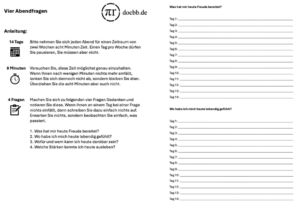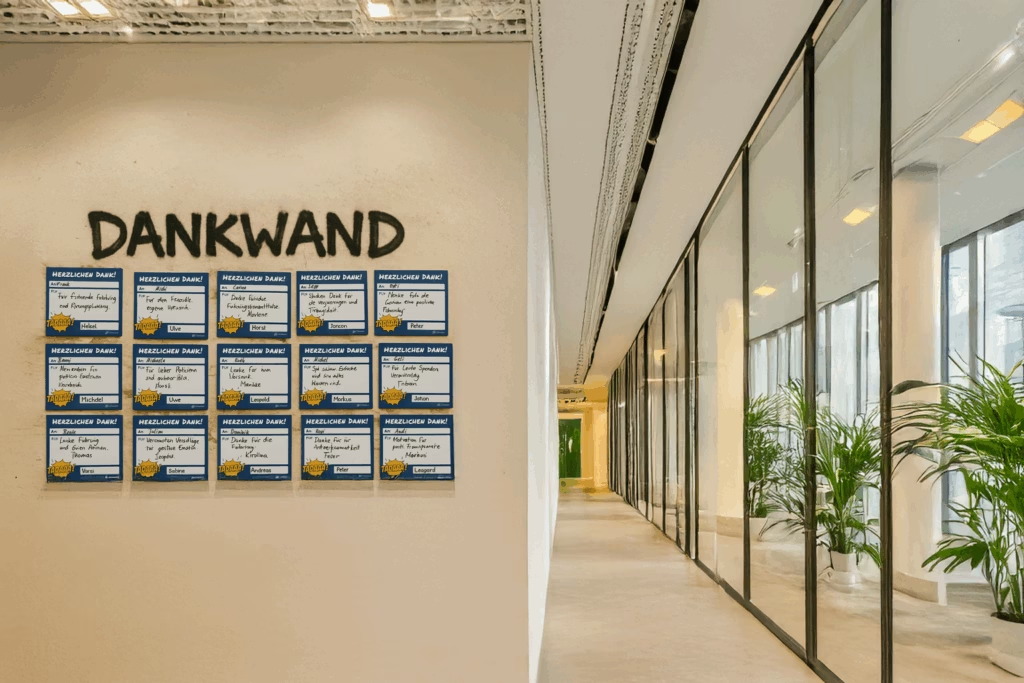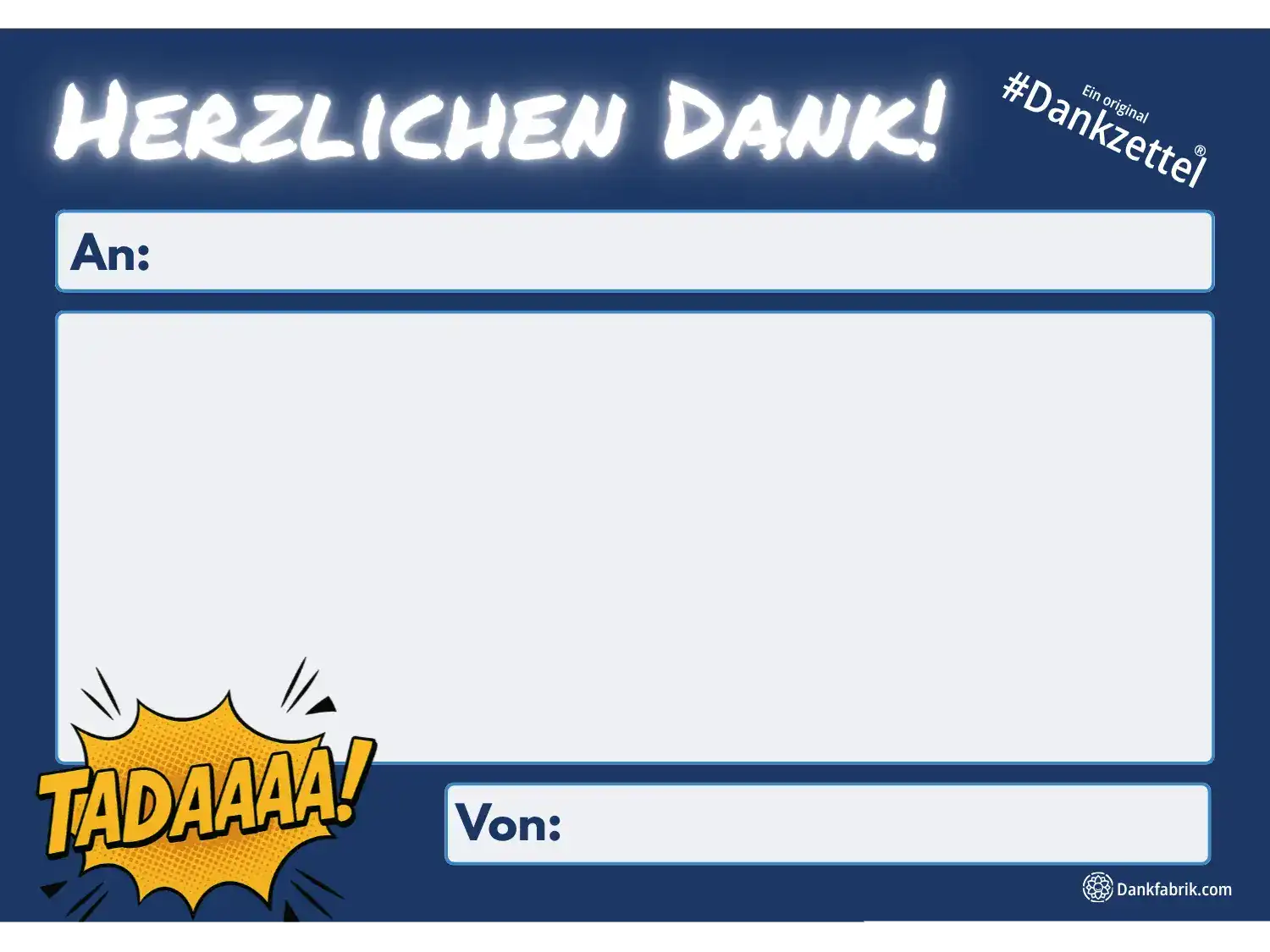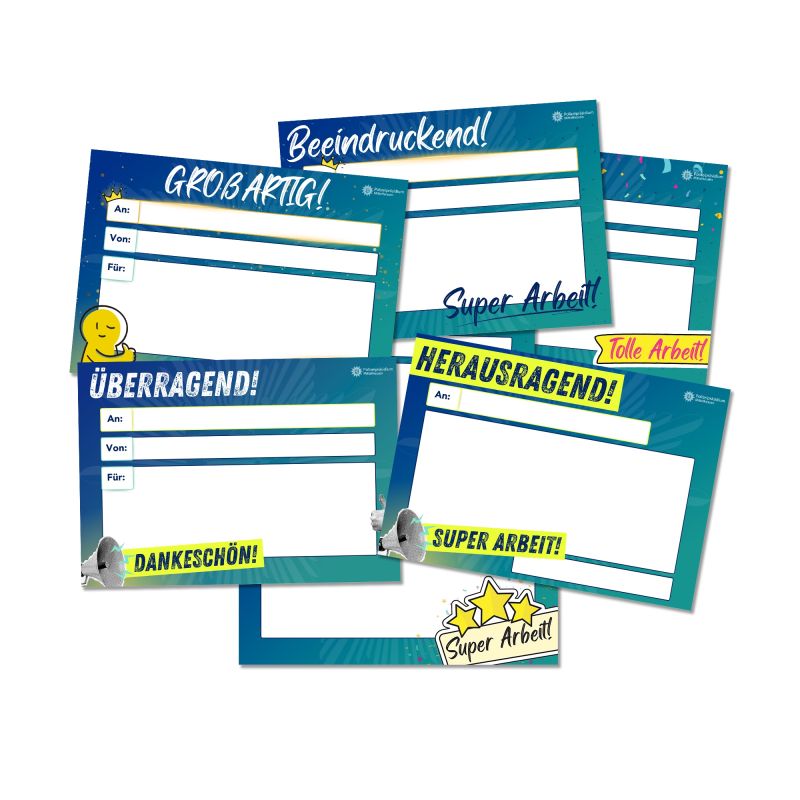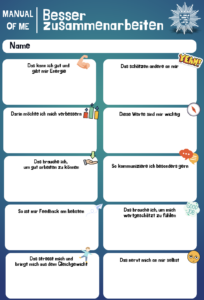Detailed feedback on your own positive leadership behavior and expectations in just 15 minutes? This is possible with the PERMA Profiler, an online test procedure that meets the criteria for organizational psychology diagnostics.
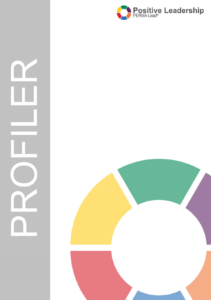
The evaluation
In my opinion, the evaluation report is terrific. You get a 13-page evaluation report with appealing content and design. It also shows your own results in comparison to a regularly updated benchmark. This allows you to see in which PERMA lead factors you are already well positioned and where there is still potential for development.
The exciting thing: The Profiler is also part of the 360-degree feedback and, based on the data from the self-assessment and external assessment, a study was able to show that although managers rate themselves better than employees do, the trends are the same. This means that if, for example, you rate yourself as having the most room for improvement when it comes to promoting positive emotions at work, employees are likely to rate you the same way. This means that you can also work on the relevant areas based on your self-assessment.
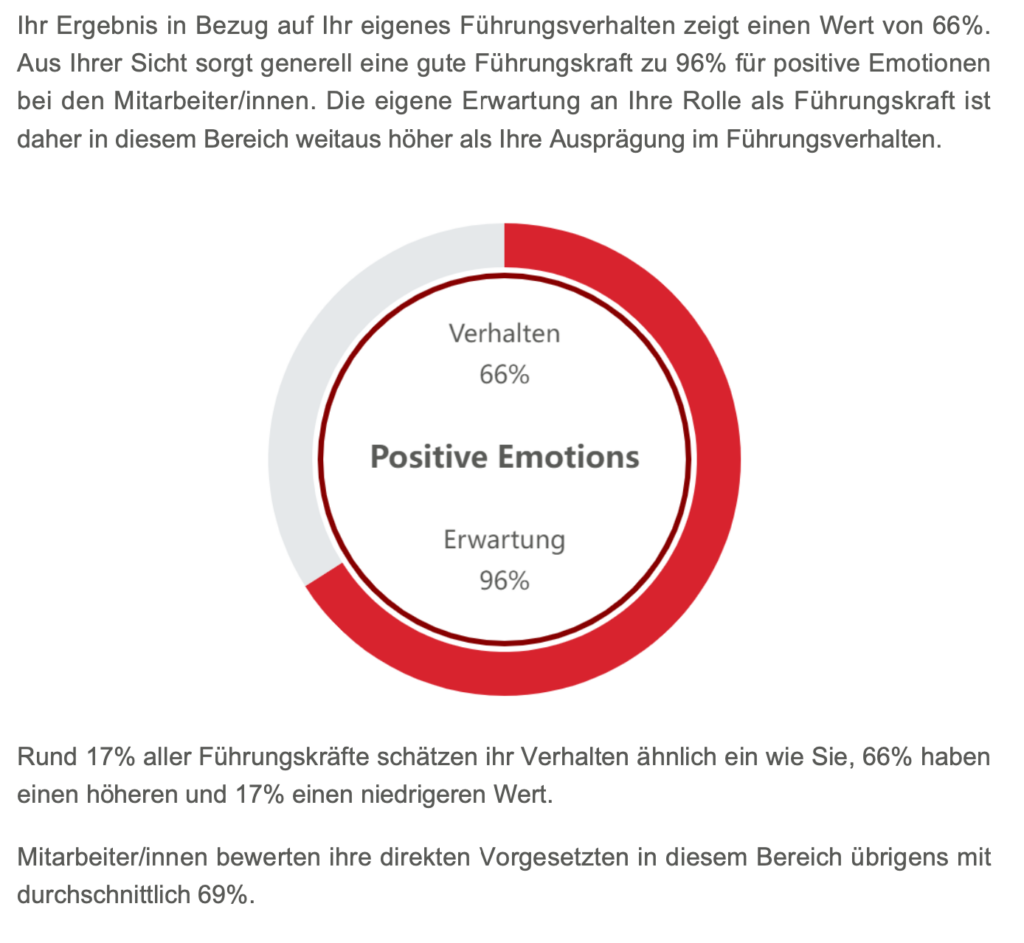
The report also has the advantage that everything is explained individually according to the results. More than 700 different text modules are combined for this purpose. And you get a benchmark for each area, i.e. how other managers rate themselves in this area.
Unfortunately, the test is not free, as the development team, servers, etc. have to be financed. There is a variant where you get the results yourself, but I would only recommend this in connection with a workshop, as in my own experience it is important to be able to discuss the results. The second option is to do this at the same time as an evaluation coaching session, in which case you receive the report during the meeting with the coach.
If you want to do one of the variants, get in touch with me or with one of the other certified PERMA lead coaches. You can find a coach in your area via this GoogleMaps map. Then simply write an email to the dear colleagues at [email protected] with the number of the coach you want and you will get the contact.


